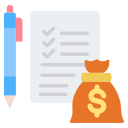
Emergency Fund Essentials During Market Fluctuations
Chosen theme: Emergency Fund Essentials During Market Fluctuations. When markets lurch and headlines shout, this is your calm corner—a practical, friendly guide to building, placing, and using an emergency fund that lets you breathe easy. Join the conversation, ask questions, and subscribe if you want steady, real‑world strategies that hold up when volatility spikes.
Why Market Volatility Makes Emergency Funds Non‑Negotiable
A safety net when stocks swing
When markets drop, an emergency fund keeps you from selling investments at a painful discount. In 2008 and again in 2020, people with cash cushions rode out volatility without panic selling. Share your experience of a downturn and how a reserve helped—or what you wish you had done sooner.
Liquidity over headline returns
Your emergency fund is not chasing yield; it is buying access. Cash in a high‑yield savings account, money market account, or short‑term Treasuries lets you pay urgent bills immediately. What matters most is certainty. Tell us where you park your liquidity and why it works for you.
The sleep‑at‑night factor
Knowing your essentials are covered changes how you invest. You can stay the course, rebalance calmly, and ignore scary charts. A solid emergency fund reduces stress at home and prevents portfolio mistakes. Do you feel calmer with a target number in place? Comment with your goal.

List non‑negotiables: housing, utilities, groceries, transportation, insurance, minimum debt payments, and essential care. Multiply that monthly baseline by your chosen months. This number defines your emergency fund goal. What categories surprised you when you added them up? Share your list to help others refine theirs.

Dual stable incomes might lean toward three months. Freelancers, commission‑based earners, or single‑income households often need six to twelve months. Add more if you support children or parents. How steady is your income today compared with last year? Tell us how that changes your target.

Prices rise and emergencies rarely arrive on payday. Add a small buffer—perhaps ten percent—to handle inflation and timing gaps. This cushion prevents overdrafts and keeps you from tapping investments. Have inflation changed your goal recently? Share what percentage you chose and why.
Where to Park Your Emergency Fund Safely
Online savings accounts often pay competitive rates and are easy to use. Seek FDIC or NCUA insurance, typically up to $250,000 per depositor, per institution. Easy transfers matter during a crisis. Which bank features—alerts, goal buckets, or instant transfers—help you stay consistent? Share your favorites.
Where to Park Your Emergency Fund Safely
Treasury bills are backed by the U.S. government and can be laddered for rolling liquidity. They offer competitive yields with defined maturities, helping you access cash on a schedule. Have you tried a 4‑, 8‑, or 13‑week ladder? Tell us how you balance yield and access.


Build It Fast: Tactics for Funding in Choppy Times
Set weekly or biweekly transfers that happen without decision fatigue. Add card round‑ups that sweep spare change into your emergency fund. Automation beats motivation when news is noisy. What transfer cadence feels painless for you? Share your schedule to inspire someone starting today.


Build It Fast: Tactics for Funding in Choppy Times
Tax refunds, bonuses, and cash‑back rewards can leapfrog your progress. Decide beforehand: a fixed percentage—or all of it—goes to the emergency fund. Pre‑commitment prevents second‑guessing. Which windfall strategy helped you most? Tell us how you split extra cash between safety and goals.
Using the Fund Wisely During a Downturn
Job loss, medical bills, urgent car or home repairs, or unavoidable travel qualify. Sales, upgrades, and non‑essential subscriptions usually do not. Write your criteria now, and share them with a partner. What is on your green‑light list? Post your rules to keep yourself accountable.



Stories from the Storm: Lessons That Stick
When a recurring client paused projects in a volatile quarter, a six‑month cushion covered rent and insurance without panic. The portfolio stayed invested, and work returned. Have you weathered a gap like this? Share what carried you through and what you would prepare differently now.
Stories from the Storm: Lessons That Stick
A reader’s car died the same week headlines turned red. Their emergency fund turned a crisis into an inconvenience, avoiding high‑interest debt and a forced stock sale. What repair or surprise bill validated your safety net? Tell us how quickly you rebuilt afterward.
